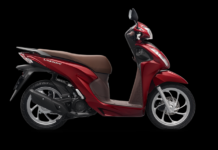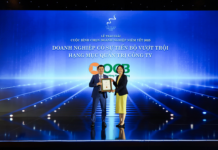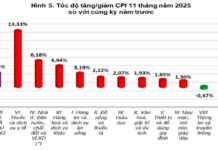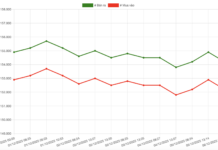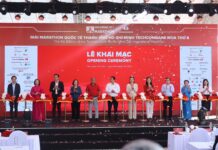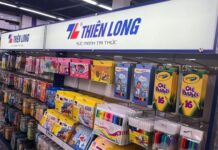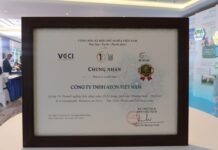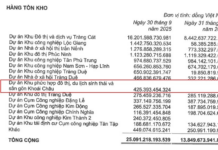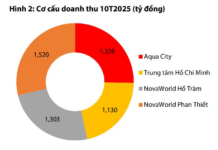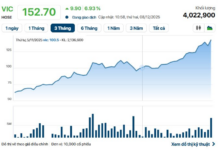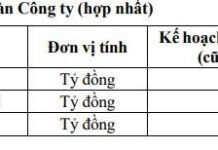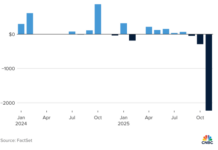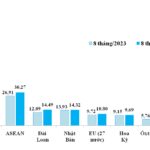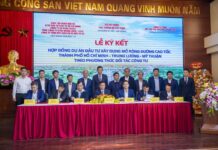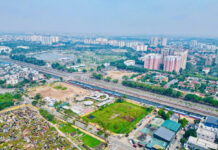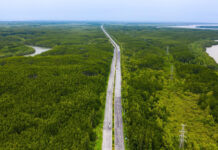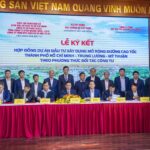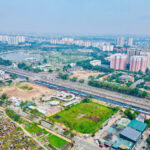High-Speed North-South Railway Investment Quota
According to the pre-feasibility study report on the North-South high-speed railway project, the Ministry of Transport stated that the overall goal of constructing the high-speed railway line is to meet the transport demand, contribute to the optimal restructuring of the transport market share in the North-South corridor, promote socio-economic development, and ensure national defense and security.
The specific objectives are to strive for approval of the investment policy before 2025; complete land clearance and commence construction before 2030; and complete the entire line before 2045.
The proposed North-South high-speed railway investment has a length of 1,541 km, with a double-track, 1,435 mm gauge, electrification, and an infrastructure design speed of 350 km/h. It will have 23 passenger stations with an average distance of about 67 km and 5 freight stations associated with major cargo hubs. The line will start from Ngoc Hoi Station (Hanoi), passing through 20 provinces and cities, and ending at Thu Thiem Station (Ho Chi Minh City).
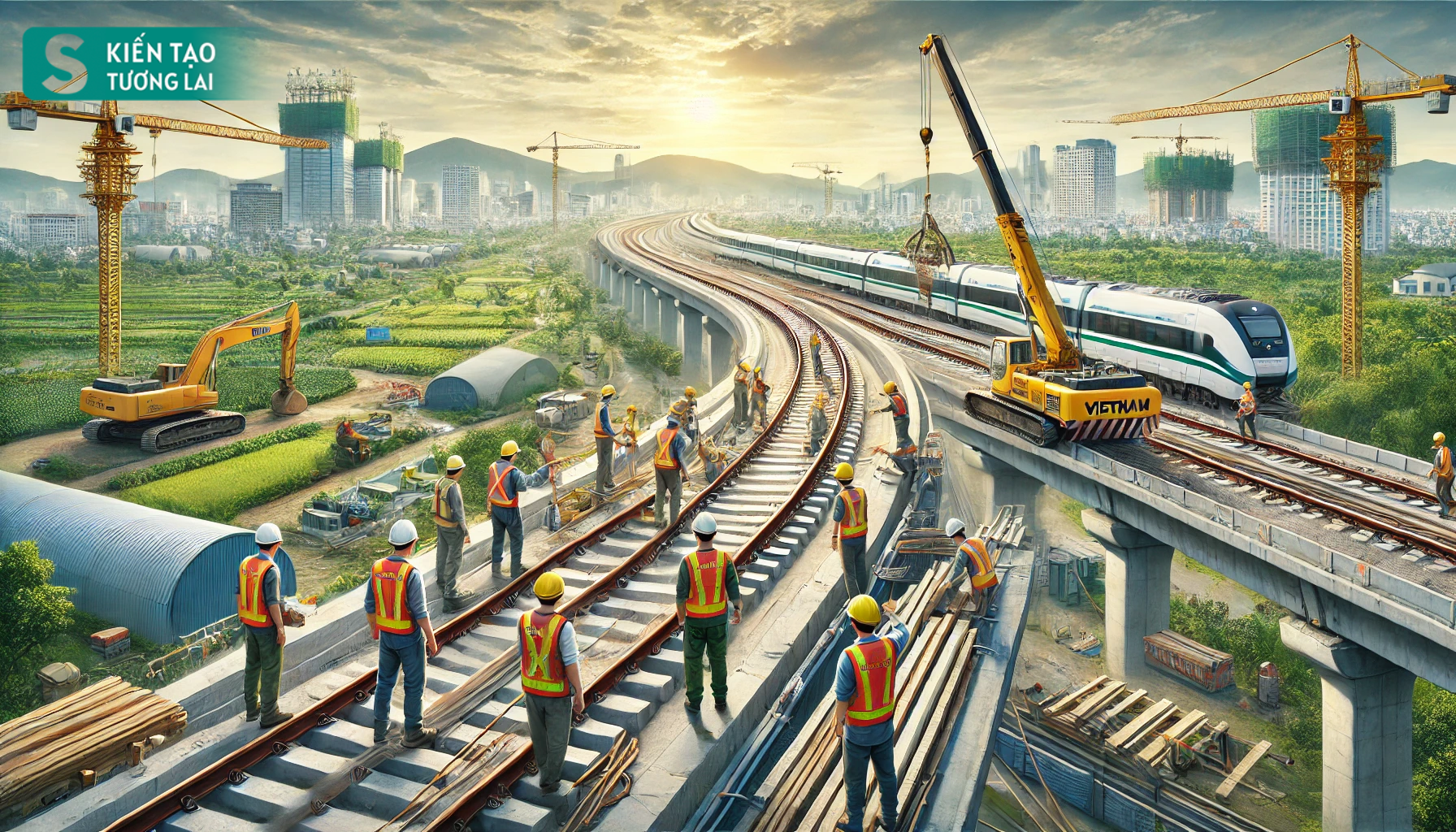
1 km of high-speed railway in Vietnam requires $43.69 million. AI ChatGPT illustration
After reviewing the investment plan, preliminary technology, technical and investment scale, and referring to the investment quotas of high-speed railway projects that have been and are being implemented worldwide, the consulting firm preparing the pre-feasibility study report calculated an estimated total investment of about $67.34 billion, with an investment quota of about $43.69 million/km.
This is an average compared to some other lines worldwide with the same speed range when converted to 2024 values, such as the Nuremberg-Ingolstadt line (Germany) with an operating speed of 300 km/h and an investment of $60.5 million/km; and the LGV Sud Europe-Atlantique line (France) with an operating speed of 300 km/h and an investment quota of $45.2 million/km.
Additionally, the Osong-Mokpo line (South Korea) has an operating speed of 305 km/h and an investment quota of $53.6 million/km; the Beijing-Shanghai line (China) operates at 350 km/h with an investment of $33.1 million/km; and the Jakarta-Bandung line (Indonesia) has an operating speed of 350 km/h and an investment quota of up to $52 million/km.
How is the cost of constructing the high-speed railway allocated?
Site Clearance and Resettlement Costs
For every transport project in Vietnam, land clearance and resettlement are critical aspects. These costs always account for a significant proportion of the total project investment.
Regarding the North-South high-speed railway project, the line passes through 20 localities, from Hanoi to Ho Chi Minh City, with 23 stations located in key positions, carefully calculated to promote local development.
The 23 areas planned for station construction have high development potential and can be relatively easily and efficiently connected to roads. Therefore, the cost of land acquisition and resettlement will be the highest ever compared to any other transport project.
Cost of Building Numerous Bridges and Tunnels
Additionally, it is anticipated that about 60% of the North-South high-speed railway line will be on viaducts, 10% in tunnels, and 30% on the ground… with viaduct construction costs being approximately 2.6 times higher than embankment construction. However, building viaducts enhances stability and minimizes risks during the construction and operation of the high-speed railway.
According to Deputy Prime Minister Tran Hong Ha at a meeting on September 25, the 350 km/h design speed railway line must be “as straight as possible,” “going through mountains and over rivers.”
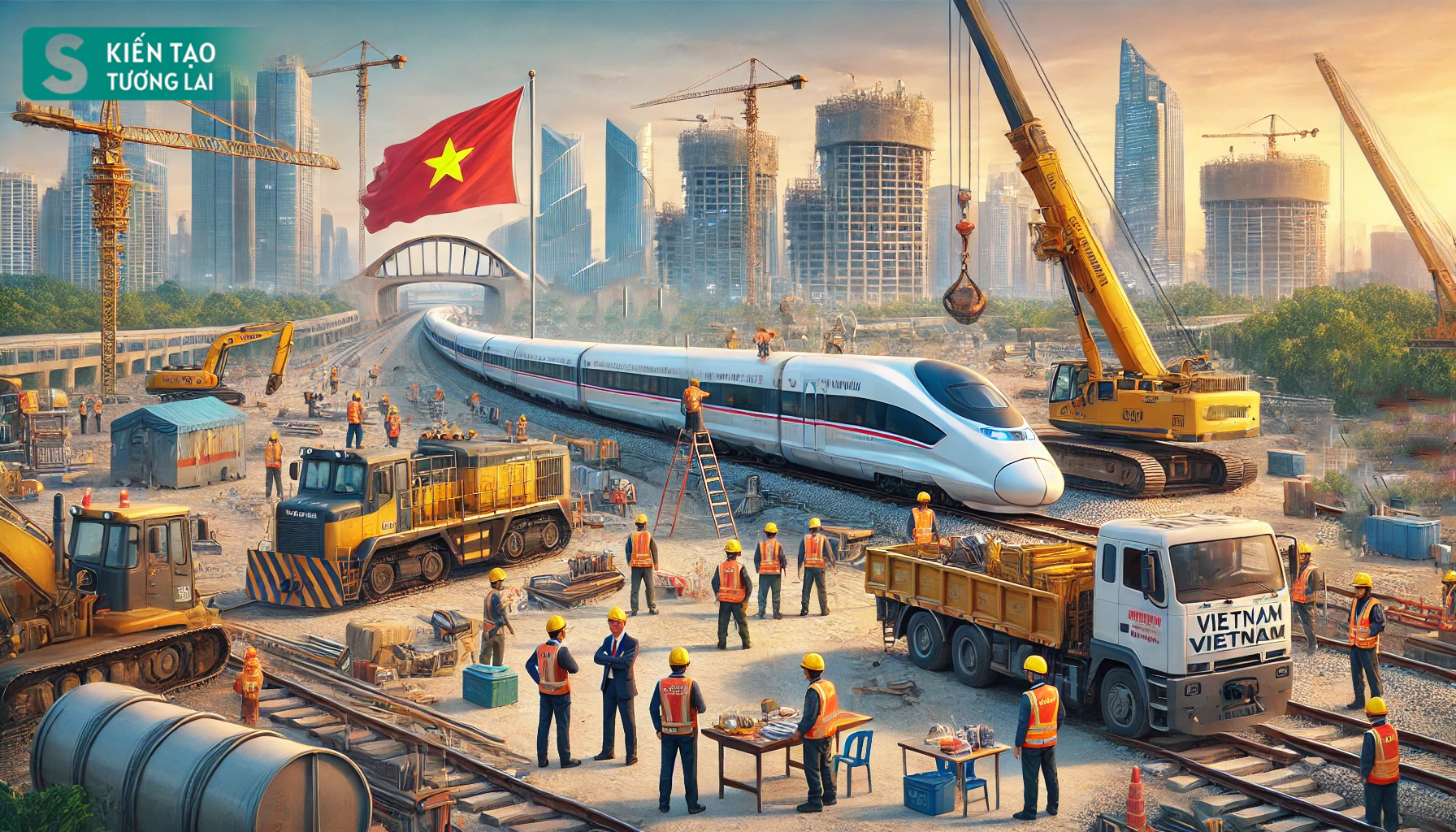
Vietnam has yet to master the technology for constructing high-speed trains and may need foreign partners. AI ChatGPT illustration
Cost of High-Speed Railway Construction Technology
According to the State Appraisal Council, Vietnam’s railway technology and transport services are outdated. Therefore, to construct and operate a high-speed railway system, Vietnam will have to import everything, from locomotives to operating equipment and technology, resulting in much higher costs than domestic production.
How to arrange capital for the high-speed railway?
Based on international experience and domestic resource assessments, the pre-feasibility study report proposes applying the public investment form for the North-South high-speed railway project.
Regarding the capital mobilization plan for the project, the Ministry of Transport suggests mobilizing the central budget allocated in the mid-term plans, government bond capital, capital contributions from localities, low-cost and loosely bound capital sources, and increased revenue and annual savings.
It is expected that the state budget sources will be arranged in the mid-term public investment plans to complete the project by 2035, with capital allocation over approximately 12 years.
On average, the project will require about $5.6 billion per year, equivalent to 24.5% of the mid-term public investment capital allocated in the 2021-2025 period, decreasing to about 16.2% in the 2026-2030 period if the ratio of mid-term public investment capital to GDP remains at 5.5-5.7% as it is currently.
During the construction and operation of the North-South high-speed railway project, there will be calls for investment in service and commercial areas at the stations and additional vehicles to be added as needed. Regarding the vehicles, after the investment, they will be handed over to infrastructure operation enterprises for operation and repayment of investment capital.
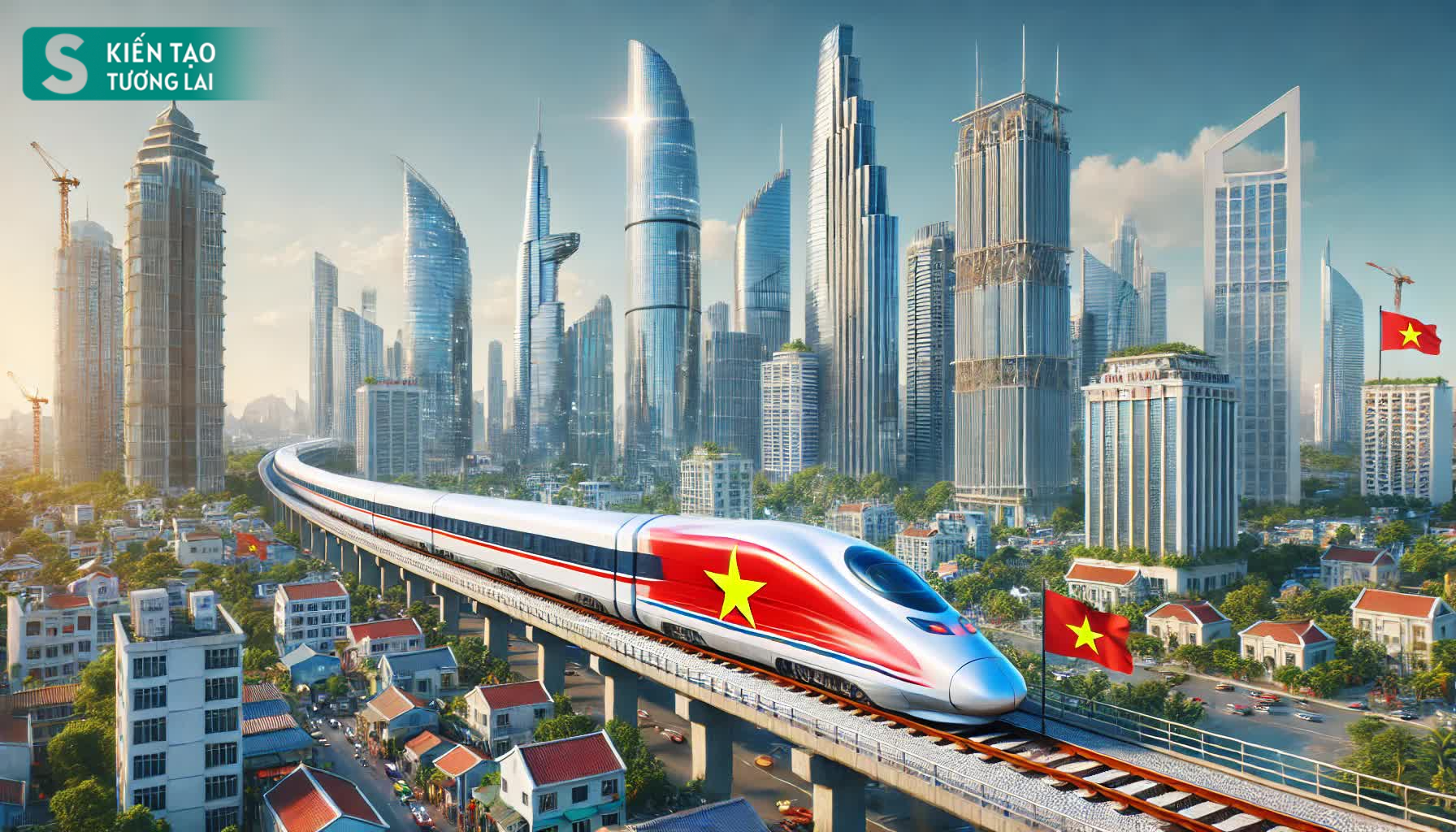
Land exploitation in TOD areas and commercial activities are expected to generate about $22 billion. AI ChatGPT illustration
According to calculations by the Ministry of Planning and Investment, this project is expected to contribute about 0.97 percentage points per year to GDP growth during the construction process. Revenue from land exploitation in TOD areas and commercial activities is projected to bring in about $22 billion.
According to Deputy Prime Minister Tran Hong Ha at the meeting on September 25, the Central Government will unify the management of standards and norms from design, infrastructure, vehicles, information systems, and operations; while “assigning tasks” to private enterprises to mobilize external resources, including land funds on both sides of the railway line, to reduce the state’s costs.
In Vietnam, according to the World Bank’s research, this is an ideal time to implement the high-speed railway project, as GDP per capita in 2023 reached approximately $4,282, and it is estimated to reach $7,500 by 2030.
“According to the assessment of the Ministry of Transport and the Ministry of Finance, if we use public investment capital for the North-South high-speed railway, we will not exceed the public debt ceiling. When constructing this line, Vietnam’s public debt may increase from 38% to about 50%, but it will still be within the allowable limit. During the implementation process, if we can borrow from international financial institutions or other countries with preferential capital, we may consider supplementing it,” said the leader of the Vietnam Railway Administration.
The Rise of Imports: Chinese-Made Products Flooding In
In the first eight months of 2024, imports from China surged to a staggering 92.5 billion USD, reflecting an impressive year-on-year growth of 34.4%. This translates to a significant increase of 23.66 billion USD compared to the same period in the previous year, as revealed by the latest data from the General Department of Vietnam Customs.
Experience International Money Transfers to Vietnam with MBCambodia – Free of Charge!
Understanding the need for financial connectivity in an era of intense international integration, MBCambodia customers can now easily send money from Cambodia to Vietnam with a preferential international money transfer service, waiving 100% of the service fee.
Anara Binh Tien Eco Resort: Your Tropical Paradise – Presented by Tin Hung Investment, Premier F1 Distributor
“Tín Hưng Investment, a proud member of the prestigious Joyoung Universal Group, has taken a momentous leap forward by securing the F1 distribution agency for the prestigious Anara Bình Tiên Ocean Leisure Sanctuary project. This pivotal move solidifies Tín Hưng Investment’s standing in the luxury real estate market, marking its emergence as a formidable player in the industry.
Introducing Expert Home – The Pioneer of Expert-Standard Apartments
Introducing the Expert Home apartments – a new residential development designed specifically for the discerning professional. Strategically located in thriving industrial provinces, these homes are the epitome of convenience and sophistication. Tailored to meet the exacting standards of experts in their field, Expert Home offers a refined living experience that surpasses the ordinary.

